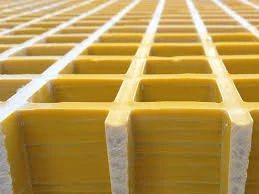loading...
- No. 9, Xingyuan South Street, Dongwaihuan Road, Zaoqiang County, Hengshui, Hebei, China
- admin@zjcomposites.com
- +86 15097380338
- Welcome to visit our website!
Affordable Options for Floor Grating Prices and Quality Materials
Understanding Floor Grating Prices Factors and Considerations
When it comes to constructing or renovating a facility, choosing the right flooring is crucial. Among various options available, floor grating has gained popularity due to its durability, safety features, and aesthetic appeal. However, one of the primary concerns for businesses and contractors remains the price of floor grating. Understanding the factors that influence these prices can help make informed decisions and manage budgets effectively.
What is Floor Grating?
Floor grating is a type of flooring system made up of a grid of materials that create a surface commonly used in industrial settings, commercial buildings, and even residential applications. It is primarily designed to allow the passage of light, air, and water while providing a stable surface for walking or working. Floor gratings can be made from various materials, including metal, fiberglass, and plastic, each having its unique set of properties, advantages, and costs.
Factors Affecting Floor Grating Prices
1. Material Type The most significant factor influencing floor grating prices is the material used in its construction. Steel gratings are usually less expensive than aluminum or fiberglass options. For instance, while steel offers high strength and durability, it may corrode over time if not properly treated, leading to higher maintenance costs. On the other hand, fiberglass grating is more resistant to corrosion and chemical exposure, making it suitable for specific applications, albeit at a higher initial cost.
floor grating price

2. Grating Design The design and pattern of the grating can also impact the price. Standard grating designs are typically less expensive as they require less customization. However, if specific designs or sizes are required, the cost may increase due to the need for specialized manufacturing processes.
3. Load Capacity Floor gratings are designed to support varying loads, and the required load capacity can significantly influence pricing. Heavy-duty grating, capable of supporting higher weights, will generally cost more than standard grating. It’s essential to assess the load expectations before selecting a type of grating to ensure safety compliance without overspending.
4. Finishing Options The finishing of floor grating can also affect its price. For example, a galvanized finish provides enhanced corrosion resistance, which is vital in outdoor or industrial applications. While this increases the upfront cost, it can save money in the long run by minimizing maintenance and replacement needs.
5. Market Demand and Location Like any product, the price of floor grating is also subject to market supply and demand dynamics. Prices may vary by region based on availability and local market conditions. Hence, purchasing from suppliers in areas where grating is widely produced may lead to lower costs.
Conclusion
Understanding the intricacies of floor grating pricing is essential for businesses and contractors looking to make smart purchasing decisions. By considering factors such as material type, design, load capacity, finishing options, and market conditions, one can strike a balance between quality and cost-effectiveness. Ultimately, investing in the right type of floor grating will not only enhance the safety and aesthetics of a space but also contribute positively to its longevity, making it a wise addition to any construction project. Before making a purchase, it’s advisable to compare prices from multiple suppliers and consider getting expert advice to ensure the best fit for your specific needs and budget.
-
The Rise of FRP Profiles: Strong, Lightweight, and Built to LastNewsJul.14,2025
-
SMC Panel Tanks: A Modern Water Storage Solution for All EnvironmentsNewsJul.14,2025
-
GRP Grating: A Modern Solution for Safe and Durable Access SystemsNewsJul.14,2025
-
Galvanized Steel Water Tanks: Durable, Reliable, and Ready for UseNewsJul.14,2025
-
FRP Mini Mesh Grating: The Safer, Smarter Flooring SolutionNewsJul.14,2025
-
Exploring FRP Vessels: Durable Solutions for Modern Fluid HandlingNewsJul.14,2025
-
GRP Structures: The Future of Lightweight, High-Performance EngineeringNewsJun.20,2025
